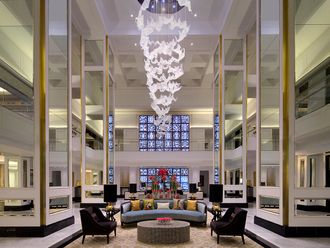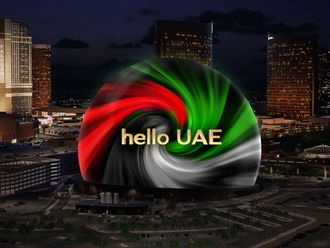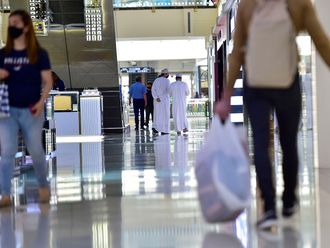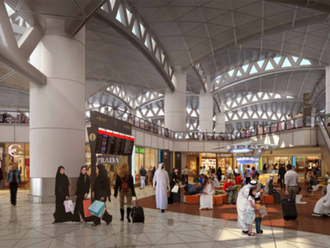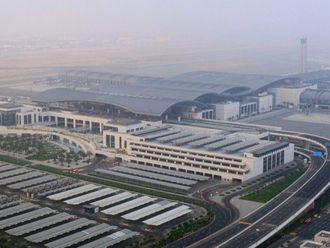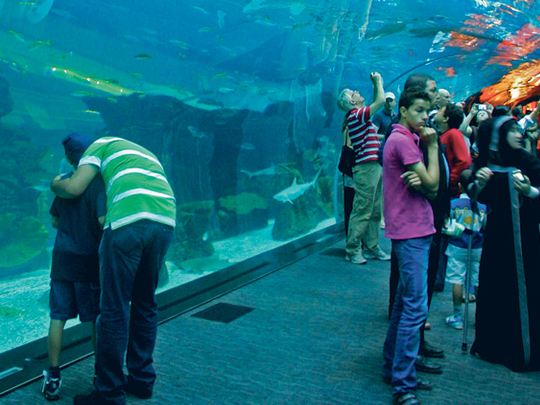
Dubai: Improper application of acrylic cement or a pressure-induced structural problem on the panel may have caused the rear left side of the shark-filled aquarium at Dubai Mall to leak on February 25, sources told XPRESS.
Specialist teams from Australia and Japan were called to check the problem at the aquarium, whose size earned it an entry in the Guinness World Records when it first opened in November 2008.
The leak was detected around 11.45am on Thursday on the left-hand side of the tank near the entrance of the walk-through tunnel, sending shoppers scampering to higher ground and prompting the mall management to shut down nearby boutiques.
Caught on YouTube
A management statement said the leak - caught by an amateur video, which has become a YouTube hit - came from one of the panel joints and was fixed "immediately".
The aquarium reopened on Friday, but the area where the leak occurred remained closed till a week later, covered by huge posters showing colourful marine life.
Witnesses said the water seeped through signature apparel shops nearby. The mall management has stated, however, that none of the more than 33,000 aquatic animals inside nor the aquarium environment were affected as the leak occurred in the upper portion.
Sources said the leak, which was plugged by around 2pm, may have been exacerbated by the high pressure build-up in the aquarium which holds 10 million litres of water.
To ease the pressure, up to four million litres of water was drained. Maintenance work was still ongoing on the affected side till Wednesday, XPRESS has learnt.
"As the water level went down, work on the damaged area was done immediately," a source privy to the aquarium's operation said, but declined to be identified.
The 8.3m-high walls are made of 75cm-thick transparent acrylic panels which are joined together by high-strength bond. The glue is strong enough to bind several panels forming a solid wall and makes the joints barely noticeable.
However, the glue must have the right strength and the surfaces to be glued must be clean and free of particles to make them hold firm.



